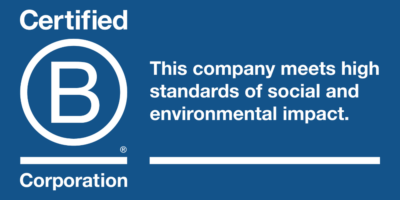WINDSHIELDS, BUMPS IN THE ROAD & THE RIGHT TO WATER
We were happy to announce the acquisition of Falcons Rock last month and are thrilled to add Greg Wait and Liz Kiefer to the Riverwater team. Riverwater and Falcons Rock share similar philosophies around responsible investing and we believe the combined entities are both stronger and better positioned to generate greater impact together going forward. For the new clients and readers of our quarterly letter, we welcome you and look forward to meeting soon.
The S&P 500 hit an all-time high in July and finished about 2% off of that high at quarter’s end. Small cap stocks, on the other hand, last peaked in August of 2018 and have a flat return going back to October of 2017. Markets have fluctuated weekly, if not daily, on trade tariffs and Federal Reserve news. Additionally, political winds in DC seem more likely to turn into gusts with Congress initiating impeachment hearings on the President.
It goes without saying that it is safer to look ahead through the windshield than the rear-view mirror when driving a car. Investors often spend more time looking in the rear-view mirror because the road ahead in markets often is not as clear as what drivers see through the windshield. We continue to cautiously move forward, mindful of the lessons history can teach us about where the markets are taking us. Using the past as our guide, we continue to take a cautious path as we see signs of change on the horizon.
The third quarter was one of the most unique that we can remember:
- The yield curve inversion intensified (comparing the 10-year Treasury to T-Bill rates). Yield curves rarely invert. It has only happened four times since the early 1980’s – and each time a recession followed 6 to 21 months later.
- Funding issues arose in the repo markets. Repos, short for repurchase agreements, are short-term loans that banks use to lend to each other. The Federal Reserve stepped into the repo market during the Great Recession and finally was able to exit five years ago. It recently stepped in again to stabilize the market. From what we have learned, technical reasons drove the intervention, but the need to intervene alone was concerning and certainly does not make us feel warm and fuzzy.
- Gold continued to strengthen while the dollar rose. Normally gold and the US dollar trade in opposite directions and have had a negative correlation over the last 3, 5, 10, and 20 years. In the last 12 months, however, they have had a positive correlation, meaning they both go up or down at the same time. This does not make sense because gold is priced in US dollars so everyone around the world must convert their currency to US Dollars to buy gold. If the US dollar is rising, then gold is more expensive to foreigners; they buy less and gold drops. It is basic supply and demand. That is not happening now. Both gold and the US dollar are considered safe havens and it seems many are seeking both.
If you don’t pay attention to how markets operate this list of three is meaningless. We find it significant in that they rarely materialize on their own and now are all occurring concurrently. Our wheels are turning trying to figure out what the markets are saying and our best guess continues to be that we are in the latter stages of the economic cycle. Therefore, it is not prudent to be overly aggressive. Maybe in the next quarter or two when what we are trying to see through the windshield ends up in the mirror we will know if we are indeed at an inflection point, or maybe it’s just another “bump in the road.”
ENGAGEMENT EFFORTS
As active shareholders, we engage with the companies we own regarding their environmental, social, and governance (ESG) policies and practices. Recently, we joined a shareholder resolution, led by Sister Nora Nash of the Sisters of St. Francis of Philadelphia, asking Chevron to respect the Human Right to Water, as outlined by the UN Sustainability Goals. During our collective dialogue, Chevron indicated it has incorporated a Human Rights Policy and a Water Statement into its Chevron Way strategic plan. Over the next 18 months, Chevron will perform due diligence regarding the human right to water in all of its operations, prioritize areas for improvement, and begin implementation. At Riverwater, we aim to increase ESG impact of our portfolio companies if we also consider them attractive businesses from a financial perspective. We will monitor the situation at Chevron to ensure they continue to work toward both.
RIVERWATER SMID PORTFOLIO
This past quarter was our worst relative to our index since Riverwater’s inception. It is always disappointing and extremely frustrating to underperform. We remain confident in our process of running a focused portfolio where divergence from a benchmark can occur over short-term time periods. Below we’ve included a year-to-date performance chart. In August we had two companies that each declined more than 30% and 50% respectively – Verso (Material sector) and Abraxas (Energy sector).
We target exposure across all major economic sectors but prefer to underweight commodity businesses where there is no pricing power and differentiated business models are nonexistent. When investing in both the material and energy sectors, commodity revenue is difficult to avoid. Both Verso and Abraxas are commodity businesses and declined both on actual and forecasted declines in demand.
We’ve spoken about both Verso and Abraxas in previous letters. Verso is easily trading at less than 50% of its true intrinsic value and the same goes for Abraxas. We met with both management teams in the late August/September time frame and absent an economic collapse, we expect their share prices to recover over the next year.
In September we were hit with two more poor performers: Grand Canyon University and Virtu Financial. Grand Canyon is our largest position and was hit by a short seller’s report which management assures us is not accurate and also not worth arguing over publicly. The stock declined about 20% in September, as the market was recovering on more positive Fed and tariff news. We trimmed the position at higher levels over the past year as it grew to an outsized position on strong stock move and will likely take advantage of any future strength to trim again.
Virtu Financial declined about 15% in September after a 15% decline in August. Virtu is one of the largest trading firms in the country and handles 20% of the shares traded in the U.S. every day. Trading volumes have declined about 20% over the last year from 8.5 billion shares in the 4th quarter of 2018 to 6.9 billion shares today. Markets have been complacent, but increased volatility should benefit the company. We have engaged with them multiple times on ESG issues and so far, have not received a warm reception in return. If we do not make headway with them in the next few quarters, we will likely move on.
We remain confident in our holdings and look forward to having positive reports when the third quarter financials are released over the next month.
RIVERWATER LEI PORTFOLIO
We only slightly underperformed this quarter and ended up with an absolute return that was flat as a pancake. During the quarter we sold one position, State Street. We mentioned how we were on the fence with State Street in our last letter. We decided to exit as we lost patience given the questionable acquisition they made, and continued revenue headwinds in fees on their passive ETF business (SPDR products) do not appear to be abating. We also trimmed one position, Union Pacific. The stock has been a workhorse as it’s doubled over the last three years, but with lower freight volumes and more competition from trucking over the next three years, we don’t expect the same level of outperformance. It is still a fantastic company, but more appropriate at a smaller than average position size.
We have not yet found replacements from the proceeds raised last quarter and are running at an above average cash position at 10%. We are honing in on some ideas in the REIT and Industrial space.
The top performers this quarter were AT&T and Zimmer Biomet and were both up double digits. AT&T rallied on Elliott Management, an activist investor, taking a stake in the company and pushing for change. Zimmer put up a nice quarterly report and raised their outlook for the rest of the year. “My level of confidence in our turnaround increases with every quarter,” said their CEO Bryan Hanson.
Our two worst performers were Pfizer and Corning, both down around 20%. In July, Pfizer announced its decision to create a joint venture with Glaxo Smithkline for its consumer business, as well as its intention to combine its Upjohn (off-patent branded) business with Mylan. These moves will allow Pfizer to focus exclusively on its innovative pharma business, which has its most robust pipeline in 15 years, according to company management and Wall Street analysts. While these business reorganizations caused the stock to decline during the quarter and will continue to cause a bit of short-term earnings disruption, we believe they will offer better growth potential over the long-term.
Corning cut its 2019 earnings guidance in mid-September, citing weaker demand as several major telecom companies cut capital spending. Deployment of capital by carriers can be lumpy, causing short-term issues like this for suppliers. Corning has spent approximately $10 billion over the past three years developing state-of-the-art manufacturing facilities for all of its glass and fiber products. This allows Corning to be the technology and price leader, which will benefit them greatly as carriers build out infrastructure for increased bandwidth, device makers produce more phones and TVs, and new applications such as pharmaceutical packaging are adopted.
Past performance is not indicative of future results. Therefore no current or prospective client should assume that the future performance of any specific investment, investment strategy or product made reference to directly or indirectly by a representative of Riverwater Partners, on its web site or unaffiliated third party web site will be profitable or equal to performance levels shown. Investment return and principal value will vary so that when redeemed, an investor’s account values may be worth more or less than when purchased.








